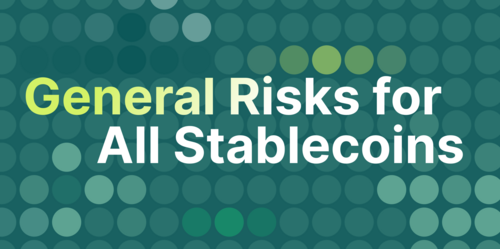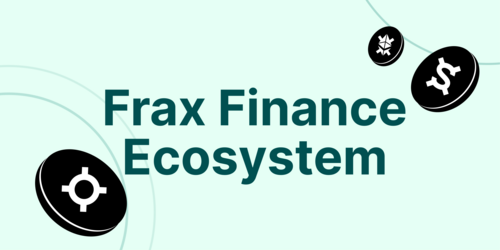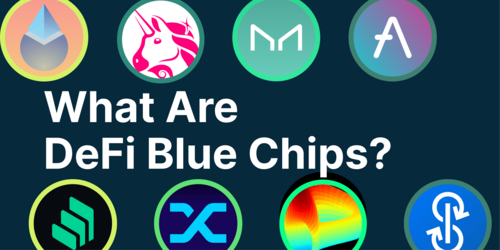Stablecoins have been an integral part of DeFi and the wider crypto space since their inception, and many protocols have fought for control of the most dominant decentralized stablecoin exchange in the scene, Curve Finance. The Curve Wars were all the rage up till a few months ago, with many notable projects that were eager to gain power over the Curve ecosystem. Now, with the current bear market in full swing, what remains of this battle?
Current standing of Curve
 CRV price & volume chart (Source: CoinGecko)
CRV price & volume chart (Source: CoinGecko)
Since the Curve Wars began sometime last year, the CRV token hit a high of $6.51 on Jan 4 2022. However following market declines with DeFi particularly badly hit, it is now down 89%, trading at $0.72 at time of writing.
 Curve Finance TVL (Source: DefiLlama)
Curve Finance TVL (Source: DefiLlama)
Curve’s TVL has suffered as well, and currently stands at ~$7B, down 71% from its ATH of $24.3B on Jan 5 2022. This is both due to a reduction in collateral value as markets have plummeted, as well as major events which spooked investors - such as the Wonderland 0xSifu saga as well as UST’s collapse.
As one of the first protocols to adopt the vote-escrowed token model, Curve allowed users to vote-lock their CRV tokens for up to 4 years, in exchange for veCRV tokens, that allow holders to claim 50% of Curve’s trading fees, as well as to boost rewards for specific liquidity pools on Curve. If users choose a shorter locking period, they will receive less veCRV tokens. As of the time of writing, over 506 million CRV tokens, or 56% of the total CRV supply has been locked, with an average lock time of 3.6 years.
 CRV release schedule (Source: Curve)
CRV release schedule (Source: Curve)
Initially, 2 million tokens were emitted daily to liquidity providers on Curve, which has been reduced to just over 1.46 million since August 2021. These emissions will continuously reduce until the entire supply of CRV is in circulation, which will take roughly another 300 years. If we average out the current amount of locked CRV per day since its launch, we estimate that around 750k CRV, or 51% of newly created CRV tokens, are locked back into Curve every day. On the other hand, this also means that about 710k new CRV tokens are introduced into the market on a daily basis, representing up to ~$510k of potential selling pressure at current prices, or $4.6 million at its peak.
 Total veCRV supply vs total CRV supply (Source: Dune - banteg)
Total veCRV supply vs total CRV supply (Source: Dune - banteg)
Since the start of February 2022, the percentage of CRV locked has stayed relatively flat at ~51%, and with a bearish outlook for markets in the near term, it’s possible that this may not continue to rise, resulting in a continued supply of CRV hitting the market.
 Curve trading volume and protocol revenue (Source: Token Terminal)
Curve trading volume and protocol revenue (Source: Token Terminal)
The supply inflation of CRV is not the only reason for its decline in price. Aside from huge spikes in January (when 0xSifu was revealed to be Michael Patryn and users rushed to exit MIM) and mid-May (due to the UST crash), trading volume and thus protocol revenue have been steadily trending down in the past 6 months, making vote-locking for veCRV less appealing for CRV holders. Additionally, veCRV also cannot be traded, thus making it a less attractive option for users who are in need of liquidity.
 CVX price & volume chart (Source: CoinGecko)
CVX price & volume chart (Source: CoinGecko)
What About Convex
Meanwhile, Convex, the synergistic ‘L2’ of Curve, is not doing too well either. The CVX token hit an ATH of $60 on Jan 1 2022, but now trades at ~$4.61, a 92% drop.
 Convex Finance TVL (Source: DefiLlama)
Convex Finance TVL (Source: DefiLlama)
Convex’s TVL sits at $4.3B, down ~80% from its ATH of $21.2B on 5 Jan 2022.
 Percentage of veCRV owned by DAOs (Source: Dune-Joksully)
Percentage of veCRV owned by DAOs (Source: Dune-Joksully)
As a refresher, Convex Finance, launched barely a year ago, quickly became the dominant player in the Curve Wars, towering over Yearn in second place by almost 10x. It currently owns slightly more than half of total veCRV supply (51%) and thus controls the most governance weight in directing where and how much CRV rewards are channeled towards specific liquidity pools on Curve.
Convex has managed to accumulate a hefty sum of CRV largely due to its increased rewards for CRV stakers. In exchange for converting your CRV into cvxCRV, stakers will be entitled to earn CRV and CVX rewards, as well as 10% of the fees earned by the protocol. However, this is a one-way process, meaning that users will not be able to convert these tokens back into CRV via Convex. Instead they can only swap them back into CRV through a Curve pool. In other words, the CRV deposits on Convex are permanent, allowing the protocol to continuously accrue more voting power. Even if users were to exchange their cvxCRV for CRV, it would be traded against circulating CRV, meaning that the locked CRV still remains within the ecosystem.
In its early days, the protocol precipitously amassed a sizable amount of TVL by maximizing profitability for Curve token holders and liquidity providers through additional CRV rewards, as well as emitting native CVX tokens in exchange for providing Curve LP tokens on their platform. Within 2 weeks of its launch on May 17th 2021, the protocol managed to accumulate over a billion dollars in TVL, but its growth has since stagnated since the beginning of 2022.
In turn, the success of Convex in amassing the majority of Curve governance power through accumulating CRV gave rise to several projects which built on top of it, instead of directly off Curve, such as Bent Finance. Instead of acquiring CRV, the protocols would aim to accumulate CVX, or its voting power, to dictate the flow of rewards towards their own incentivized pools. Convex became a proxy for the Curve Wars, thus attracting the eyes of new contenders.
Governance Power over Convex = Governance Power over Curve
Two predominant methods in acquiring governance power over Convex, and by proxy governance power over Curve, arose. The first was to accumulate CVX tokens, an approach taken by Frax, BadgerDAO, and various other protocols.
 Top 10 CVX ownership % by protocol & 30d change in CVX holdings, as of 11/6/2022 (Source: DAOCVX)
Top 10 CVX ownership % by protocol & 30d change in CVX holdings, as of 11/6/2022 (Source: DAOCVX)
Even in bearish market conditions protocols have either maintained or even increased their CVX holdings. Within the top 10 CVX protocol-holders only Wonderland sold a small amount, while the reduction in Redacted’s holdings were not sold but instead deposited into their recently launched liquid vlCVX solution, Pirex. Notably, JPEG’d, which only started accumulating CVX on 12 April 2022, has been the most aggressive accumulator of CVX, increasing their holdings by 67% in just the past month.
The other method to acquire CVX governance power was to simply bribe existing vlCVX (vote-locked CVX) token holders to vote for their pools on Curve. Vote-locked CVX functions in a similar fashion to veCRV, allowing holders to earn a share of protocol fees from Convex and to participate in voting. Bribery proved more effective, and was legitimized by protocols like Bribe.crv.finance and Votium.
 Votium metrics, from round 1 to round 20 (Source: Llama Airforce)
Votium metrics, from round 1 to round 20 (Source: Llama Airforce)
The phenomena of bribing was a hallmark of the Curve Wars, as the nature of liquidity provision rewards changed. Instead of projects having to pay for liquidity mining campaigns using their own native tokens, it was much more efficient to simply bribe CVX holders to vote for their Curve pool instead. And indeed, bribing was very profitable, where back in January every $1 spent on bribes resulted in >$4 worth of CRV emissions, according to Magnus Capital (using data from Llama Airforce). Maximum revenue on Votium also peaked in early May with a total of $21.4M in bribes.
 Votium round 20 metrics (Source: Llama Airforce)
Votium round 20 metrics (Source: Llama Airforce)
Now in the latest round however, each $1 spent yields only $0.83 in CRV emissions, with a total of only $3.2M in bribes. With less competition from projects to bribe CVX holders, the average earnings per delegated vlCVX on Votium in the latest round stands at $0.1, a far cry from its ATH of $0.87/vlCVX back in late December 2021.
The emissions/$1 spent on bribe metric refers to how much LPs will get in CRV + CVX rewards for every $1 spent on bribes. If emissions are more than bribes spent, then it is cheaper to bribe than to provide liquidity mining rewards directly, and conversely it would be cheaper to provide LM rewards directly when emissions are below <$1. However it takes time and effort to set up such rewards if they have not done so previously, and bribes are still occuring when emissions/1$ spent dipped below $1 (albeit briefly).
Reverse Flywheel = Death Spiral?
The Convex/Curve flywheel was one of the most successful and longest running that we’ve seen in DeFi. However, with the bear market upon us, will we see the flywheel break? As the Curve Wars revolve around gaining control over CRV emissions to incentivise liquidity, the main factor which perpetuates the flywheel effect is the price of the CRV token. If CRV depreciates drastically in value such that rewards are no longer worth competing for, the “war” between protocols to gain Curve governance powers becomes moot.
Aside from the challenging macroeconomic conditions we face currently, several factors may contribute to the increased selling pressure on CRV. Although CRV is one of the few governance tokens with a value accrual mechanism in the form of a share of protocol revenue, trading volume has decreased during the recent months, lessening the incentive to hold and lock CRV. The non-transferable nature of veCRV has also become less attractive, prompting investors to look for more liquid assets. Additionally, some selling pressure may come from disillusioned retail investors of CRV who may have initially bought into the bullish narrative of the Curve War flywheel, thus propping up the price of CRV.
For now at least, we can clearly observe that competition between protocols to have CRV emissions directed into their liquidity pools have cooled down drastically. With less demand for CRV rewards, Convex’s role in the Curve ecosystem also diminishes, further slowing down the flywheel, and putting pressure on the CVX token.
The symbiotic relationship between CRV and CVX is quite evident - theoretically, the price of CVX should fall if the value of CRV falls and vice versa. As it stands, each unit of circulating CVX controls ~3.7 units of veCRV, but CVX is still trading at a premium, which implies that CVX still carries some value of its own.
But in light of all the FUD and bearish sentiment going on, some have questioned what would happen if the value of CRV controlled per unit of CVX goes below the current price of CVX?In a way, this situation is parallel to the collapse of OHM. The unit price of OHM has dropped way below the unit value of its underlying treasury, which one would consider that to be the “fair value” for OHM. However bear in mind that the treasury would only be used to reestablish a peg should it ever fall below 1 DAI.
Similarly, there is no prerogative for Convex to establish a ‘floor’ for the value of CVX. Unlike some stablecoins that allow you to redeem the tokens at a specific price, CVX does not have a function for users to exchange their CVX for the amount of CRV it controls. Then, If the price of CVX is allowed to fall below the intrinsic value of CRV controlled per unit of CVX, the market would have to act on its own accord to fill in this inefficiency and restore parity. On the flip side, the market may deem CVX as having negative value accrual on its own due to the reduced value of CRV emissions, resulting in much lower valuations of its controlled CRV.
In any case, Curve has cemented itself as one of the largest sources of liquidity for stablecoins, and it will be hard for newer projects to take a shot at overthrowing them, so long as there are still plenty of CRV emissions to incentivize liquidity to stay. However, maintaining the price of CRV, and by extension, CVX, is another story.
The main goal here is to contain the CRV emissions within the Curve ecosystem for the long-term, and while the veCRV model has definitely played an integral role in doing that, we believe that it needs to offer more attractive benefits to would-be stakers amidst the bearish macro environment. Obviously a return of bull market and trading volume to Curve would greatly help matters, as it would make locking CRV for veCRV attractive again as protocol revenue returns.
Some potential proposals from the Curve DAO could be to increase fee revenue for veCRV holders, or even work with projects such as Pirex to create a more accessible and liquid version of veCRV to reduce the lock-in risks for veCRV holders. Different governance models can also be explored that doesn’t require permanent locking of CRV. The return of higher CRV prices could also re-energize the bribing market for emissions and get the flywheel spinning again.
This article was produced in collaboration with Wendy. You can follow her on Twitter here.

Win Win is an avid gamer, interested in navigating the vast world of NFTs and the cryptoverse. Entering the crypto space in 2020, Win Win focuses particularly on DeFi and GameFi, looking out for the latest developments and projects in the space. The author has lived through the meteoric rise of DeFi as well as the collapse of Terra and FTX. Follow the author on Twitter @0x5uff3r





 Or check it out in the app stores
Or check it out in the app stores
